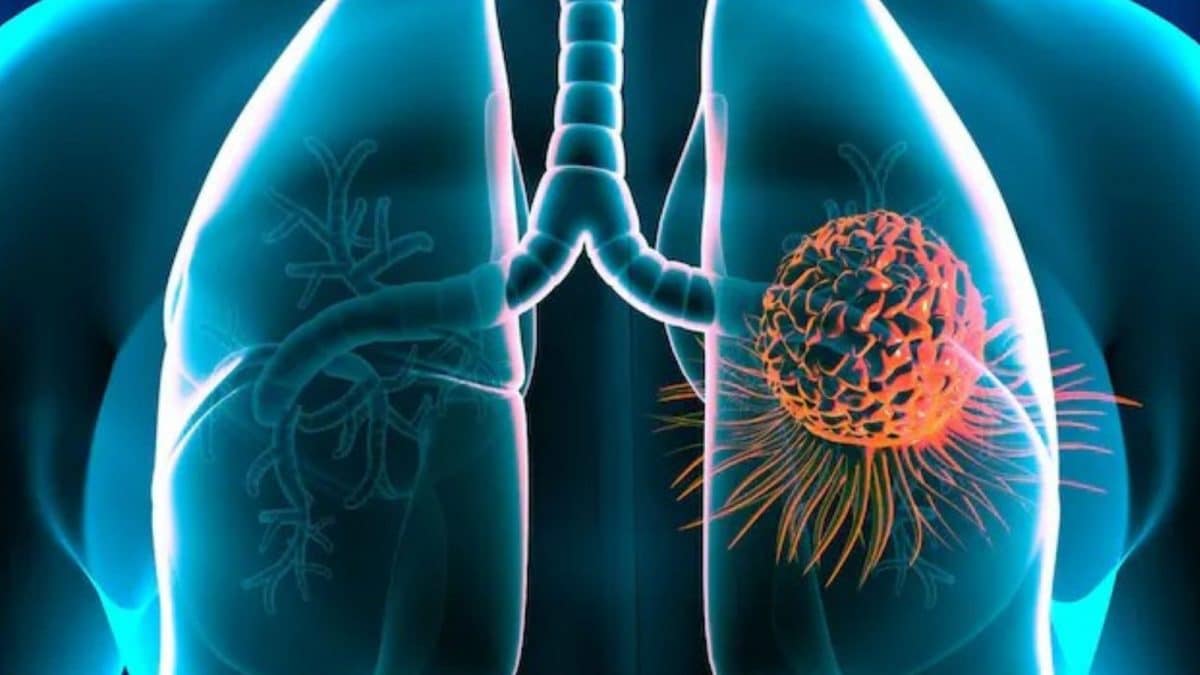Lung Cancer In Women: Why The Symptoms Are Often Missed Or Misdiagnosed

Last Updated:August 03, 2025, 14:06 IST
For women in India, lung cancer is often in plain sight but overlooked due to diagnostic and societal barriers
Research across studies, including NCRP data, confirms that many women diagnosed with lung cancer in India have never smoked
Lung cancer is one of the most prevalent causes of cancer deaths among women glocally. In the United States, lung cancer surpassed breast cancer as the leading cause of cancer-related deaths among females since 1987. In India, lung cancer is also on the rise among women, emerging as a significant public health concern. According to the National Cancer Registry Programme (NCRP) data for 2012–2016, lung cancer ranks among the top five cancers in women, constituting 6.2% of all cancer cases in females. The age-adjusted incidence rate for lung cancer in women is highest in Aizawl district, Mizoram (27.9 per 100,000), followed by Mizoram state (18.0 per 100,000). Trends show a significant increase in lung cancer incidence in cities like Bengaluru, Chennai, Delhi, and Mumbai from 1982 to 2016.
Dr Vishnu Hari, Senior Consultant & Head, Medical Oncology, Haematology & BMT, Sarvodaya Hospital, Sector-8, Faridabad shares all you need to know:
Another alarming statistic is that the age-adjusted lung cancer incidence among females in India is increasing annually and approaching that of males. Approximately 32% of lung cancer cases in women occur in the 55–64 age group, and adenocarcinoma is the dominant histological subtype, accounting for 53% of cases in females compared to 34% in males. In a Kolkata-based study, more than 2/3 rd of female lung cancer patients were non-smokers, suggesting that lung cancer is not solely a smoker’s disease.
Symptoms in females are frequently missed or misdiagnosed, delaying treatment and resulting in poor outcomes. The reasons for neglected symptoms are a mix of biological, sociological, and diagnostic issues specific to women. In India, around half of female lung cancer patients are diagnosed at an advanced stage, which contributes to high mortality rates.
More women are diagnosed with lung cancer who are non-smokers than ever before. Research across studies, including NCRP data, confirms that many women diagnosed with lung cancer in India have never smoked. This can lead to a bias where healthcare professionals may overlook lung cancer as a potential cause of symptoms, particularly in young, otherwise healthy women who are non-smokers. Biologically, lung cancer in non-smoker females often presents as adenocarcinoma with a particular mutation in the EGFR gene which is treated differently than a lung cancer without this mutation, whereas smokers more commonly develop other types of cancer viz. squamous cell carcinoma or small cell lung cancer, linked to tobacco-related carcinogens. Environmental factors like air pollution, second hand smoke, and indoor biomass fuel exposure are significant contributors to non-smoker lung cancer in Indian women.
The biological differences in lung cancer between non-smokers and smokers have significant treatment implications. Non-smoker females with adenocarcinoma frequently harbor EGFR mutations, making them more responsive to targeted therapies like EGFR tyrosine kinase inhibitors (e.g., gefitinib or erlotinib), which can improve survival compared to traditional chemotherapy. In contrast, smokers with squamous cell carcinoma often lack these mutations and are more likely to benefit from chemotherapy or immunotherapy, due to a higher tumor mutational burdens associated with tobacco exposure. These differences underscore the need for doing additional advanced tests to identify certain genetic mutations, at diagnosis to tailor lung cancer treatment.
Frequently observed symptoms such as fatigue, shortness of breath, back pain, or a cough lasting three weeks are often dismissed as non-serious conditions like asthma, allergies, menopause, or anxiety. In India, vague or mild symptoms may be ignored by both healthcare providers and patients, limiting opportunities for timely imaging and testing. Women also tend to present with non-specific symptoms, such as shoulder pain and hoarseness, compared to men.
Societal roles and caregiving responsibilities also delay diagnosis. Women in India often prioritize family well-being over personal health, leading to delays in seeking care. This may cause women to dismiss early warning signs or postpone medical consultations until serious symptoms develop.
Developing awareness among women and primary healthcare providers is critical. Persistent or unusual respiratory symptoms, even in non-smokers, should prompt immediate investigation with chest X-rays or CT scans. In India, where 75% of lung cancer cases are diagnosed at stages 3 or 4, early detection is vital to improve survival rates. Public health campaigns must emphasize that lung cancer affects women without observable risk factors, including non-smokers. Increasing advocacy for annual check-ups, detailed medical histories, and addressing gender biases in medical diagnoses can reduce delayed or missed diagnoses.
For women in India, lung cancer is often in plain sight but overlooked due to diagnostic and societal barriers. Recognizing women-specific symptoms, risk profiles, and the rising incidence (e.g., 30,109 projected cases by 2025) is essential to advocate for early detection and intervention, ultimately improving survival outcomes.

Swati Chaturvedi, a seasoned media and journalism aficionado with over 10 years of expertise, is not just a storyteller; she’s a weaver of wit and wisdom in the digital landscape. As a key figure in News18 Engl…Read More
Swati Chaturvedi, a seasoned media and journalism aficionado with over 10 years of expertise, is not just a storyteller; she’s a weaver of wit and wisdom in the digital landscape. As a key figure in News18 Engl… Read More
view comments
Read More
[title_words_as_hashtags




